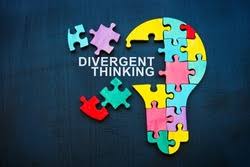How the Merriam-Webster Dictionary Enhances Literacy Instruction
The Merriam-Webster dictionary is more than just a reference tool—it’s a powerful resource for teaching and learning, especially for students with diverse literacy needs.
Whether you follow a structured literacy or balanced literacy approach, incorporating dictionary skills can strengthen foundational reading and writing abilities. Here’s how
How the Dictionary Supports Both Approaches
| Key Literacy Component | Structured Literacy | Balanced Literacy |
|---|---|---|
| Phonics and Decoding | Provides pronunciation symbols for explicit teaching of sound-letter relationships. | Supports decoding of unfamiliar words during guided or independent reading. |
| Syllable Division | Reinforces systematic instruction in breaking words into syllables for decoding and spelling. | Helps students identify syllable patterns during shared or independent reading to improve fluency. |
| Morphology | Highlights prefixes, roots, and suffixes for explicit word structure instruction. | Encourages exploration of word parts to expand vocabulary during writing or reading. |
| Spelling Patterns | Reinforces systematic spelling rules and irregularities for explicit teaching. | Helps students verify spellings and apply knowledge in writing tasks. |
| Vocabulary Development | Teaches word meanings explicitly, enhancing comprehension and language skills. | Allows students to explore word meanings, synonyms, and antonyms in the context of authentic reading. |
| Word Analysis | Supports explicit strategies for breaking down and analyzing complex words. | Encourages contextual exploration of words during reading for better understanding. |
| Fluency | Helps students practice accurate pronunciation using phonetic symbols. | Enhances fluency by clarifying pronunciation during read-alouds or independent reading. |
| Independent Learning | Encourages systematic practice in decoding and word analysis using dictionary entries. | Teaches students to use dictionaries independently during authentic reading and writing tasks. |
Why It Matters
By teaching students how to effectively use the Merriam-Webster dictionary:
- Structured literacy students gain a systematic tool to build decoding and spelling skills.
- Balanced literacy students can connect dictionary use to real-world reading and writing tasks.
Rather than focusing on differences between literacy approaches, my goal is to empower all students with the tools they need to thrive.
The Merriam-Webster dictionary is an excellent resource for students in 4th grade and beyond, but it is especially valuable for secondary students who are years behind in reading. With its ability to enhance decoding, vocabulary, and comprehension, the dictionary helps foster independence and confidence in literacy.
I have lived what I write and advocate for, and as a practitioner, I have seen the transformative impact of these tools and strategies firsthand.
Shawn Anthony Robinson PhD




Comments
Post a Comment